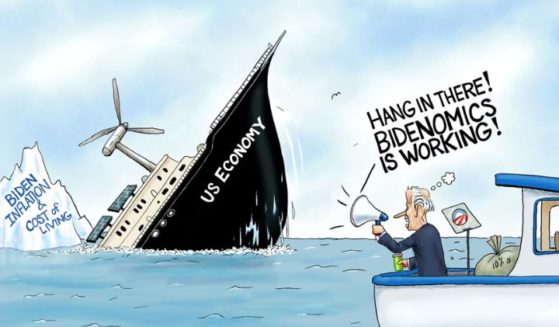Report: Biden Planning to Reverse Trump Policy, Make Unprecedented Change to Food Stamps
The food stamps program is set to see its biggest increase in the history of the subsidy, thanks to the Biden administration’s updates to the way that the figures are calculated.
This coming fiscal year, Supplemental Nutritional Assistance Program benefits will increase by over 25 percent compared to pre-pandemic numbers, Agriculture Secretary Tom Vilsack explained in a news release on Monday.
The U.S. Department of Agriculture has updated its Thrifty Food Plan, a model food plan determined by the agency based on nutritional guidelines, food prices and consumption patterns that are used to calculate food prices.
The 2018 Farm Bill called for the Thrifty Food Plan to be revised, which, beyond adjustment for inflation, had not been done since 1962, The New York Times reported.
Proponents of the SNAP program, so-called “anti-hunger advocates” as Bloomberg described them (who are the pro-hunger advocates? Calvin Klein art directors circa 1992?) have argued that an increase to the subsidy is necessary to meet current recommendations of nutrition and suit the average American lifestyle, which includes a very depressing roughly 30 minutes of food prep per day per household.
“A modernized Thrifty Food Plan is more than a commitment to good nutrition — it’s an investment in our nation’s health, economy, and security,” Vilsack said of the changes.
“Ensuring low-income families have access to a healthy diet helps prevent disease, supports children in the classroom, reduces health care costs, and more. And the additional money families will spend on groceries helps grow the food economy, creating thousands of new jobs along the way.”
Officials also “incorporated new dietary standards, adding more seafood, such as canned tuna, and more red and orange vegetables,” according to the Times.
The updated shopping list will provide for an average $36.24 increase in benefits per person for fiscal year 2022, which begins Oct. 1, as NPR reported.
This will increase the maximum benefit for a family of four to $835 a month.
Temporary pandemic increases to the program which were approved by Congress last year were set to expire — but this move on the part of the Biden administration did not require congressional approval.
This marks yet another contrast on the part of President Joe Biden to his predecessor, President Donald Trump.
Under Trump, as unemployment sank to historic lows before the pandemic, the number of Americans on food stamps dropped as well.
Just before the Chinese coronavirus first arrived on U.S. shores and the economy was turned upside down in a matter of weeks, the Trump administration was able to boast of 6 million Americans who no longer qualified for food stamps.
While our “anti-hunger” crowd would argue that the SNAP program, which set the American taxpayers back $63.7 billion in fiscal year 2019, is necessary to give low-income families the boost they need to survive, the Trump economy gave low-income families the jobs they needed to support themselves.
At the end of fiscal year 2019, this figure had been reduced to just $53.7 billion and the total number of recipients had gone from 42,715,593 when Trump took office in January 2017 to 36,223,717 in November 2019.
As Trump boasted during his 2020 State of the Union address, his administration saw the creation of 7 million new jobs, historic low unemployment rates, 3.5 million people added to the workforce, and 10 million people who were lifted off welfare in addition to the 6 million fewer SNAP recipients.
In January 2020, Brandon Lipps, then-deputy undersecretary for Food Nutrition and Consumer Services, credited the booming job market with the reduction in Americans reliant on SNAP to fulfill their basic nutritional needs.
“Employers are hungry for employees, and they have now moved into employment. It’s because they’re employed and above the level of poverty that they no longer qualify for SNAP,” Lipps told the Washington Examiner at the time.
Now, there is a nationwide labor shortage, sky-high gas prices, rising inflation and historically high spending on the SNAP program.
Of course, as the media uncharacteristically slams Biden for his botched withdrawal from Afghanistan this week, they’re certainly covering this groundbreaking bit of news in the world of crippling federal spending quite glowingly, perhaps all too eager to find something new to concentrate on other than the modern-day iteration of the disastrous fall of Saigon.
What a surprise.
Truth and Accuracy
We are committed to truth and accuracy in all of our journalism. Read our editorial standards.












